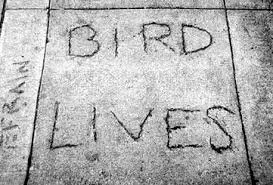Cornbread Exposed: Why He’s NOT the First Graffiti Artist
Cornbread makes the claim that he started graffiti and spread it worldwide back in 1965, but what if I told you it was all a lie. Cornbread begins the story off with a lie, as he used to claim he began in 1967. These claims were made when he was first coming into his fame and back when it was commonly thought that New York started graffiti in the early 70s. This would put him as the first, but there’s an issue. There were writers in Philly that even Cornbread knows personally, who started years before him. Not to mention, Johnny Cool in New York started even before, back as early as 61. Now that’s just graffiti as we know it today, but what about before then?
For this conversation, we’re working off of what cornbread believes graffiti is since he’s the one making the claim to be the first. For that reason, hieroglyphics and cave paintings will be taken out of the discussion because he doesn’t predate those and he doesn’t view them as graffiti. His metric for what graffiti is nowadays is words written on walls illegally for the sake of notoriety and being seen. With this description, we could use ancient Rome as a jumping point since people famously wrote on walls back then, and there’s photographic proof of this as well. They used to make up names and even cross one another out, much like today’s version of graffiti. We also have examples of graffiti in the 1800s. This is the part where Cornbread defenders would say, “thats too far back, it doesn’t count”. To which i say, fine we can still easily prove others started in every decade from 1930-1960.
1930’s
In the 1930’s Mr. Eternity popped up on the scene in Australia, writing Eternity wherever he could. During his time, he did roughly half a million tags (more than most writers will ever do in a lifetime), and he wrote for 35 years, ending in 1967 when he passed away. Not only does Mister Eternity predate Cornbread, but he did it for much longer, had articles written about him, and he got his name put onto a bridge in bright lights.
1940’s & 1950’s
During the 1940s and 50s we had graffiti around the world in different forms. Gangs used graffiti as a way to mark territory, but some don’t consider this to be graffiti, and neither does cornbread, as he admits gangs started before him. We also had more political graffiti in São Paulo; however, once again, people are quick to dismiss this as not being the same kind of graffiti. No issue, check out these photos of graffiti done in New York back in the 40s. Once again, made up names, on walls without permission, for the sake of popularity. Do keep in mind, this isn’t a comprehensive collection of graffiti in the 40’s either, this is just a preview into that time period. At this point, there are people around the world tagging in much the same way, and though it’s not prevalent or popular, flashy, or trendy, it’s happening in different areas. During the 50’s we saw Bird Lives tags in New York, and though this was a collection of artists, this was no different to Killroy in the sense that it was a collection of artists. Bird Lives was also a tribute to a musician who died, but once again, this shares parallels to graffiti. In graffiti, we have Sane Smith, someone who writes their brother’s name after he died.
1960’s
By the 1950’s we had plenty of people in New York still tagging nicknames onto buildings, but one notable figure was Johnny Cool. He, and many others, had begun what we would consider more traditional graffiti back around 1961. While people would use nicknames, there were two styles of naming conventions that were the most popular at the time. You the movie credits style of names ( Golden Boy as Anthony Cool, or Anna as Brillo). Then you had the address style of name where you’d put the number of your street at the end of the name (Taki 183, Stay High 149, Tracy 168). In Philly, a different movement began, separate and isolated from NY. People like Cool Earl, Kool Klepto Kid, and Bobby Cool. These are just 3 of the many people who began doing graffiti in Philly before cornbread began. Not only was Cornbread not the first graffiti artist, wasn’t even the first in his area. To make matters worse, the name Cornbread was a popular nickname in juvenile detention centers, and it was already written on the walls of the detention center where Darryl was kept. In short, he wasn’t even the first Cornbread.
Many of Cornbread’s stories are complete lies as well, or they’re stolen stories that he then exaggerates. For example, he claims to have tagged an elephant at night in the zoo. The problem is the elephants are kept indoors in an enclosed area that can’t be accessed. He describes the elephant as being in the same area where visitors would view it, so the story doesn’t line up. Not to mention the zoo itself says that this never happened at all. Some would say, “Well the zoo is trying to cover up to make themselves look good”, but there are no photos, no records, and no arrest papers for Cornbread after he was supposedly caught in the act. With how much he claimed to have tagged, the zoo would have 100% taken legal action, and he wouldn’t have gotten off with just “having his mom pick him up, “ as he claims.
He then claims to have tagged the private jet of the Jackson 5, but once again, no pictures, no articles (he claims there was news and article coverage), yet when asked, “did anyone else see the tag on the jet” he says that he saw it, he’s the only one. Now, if we believe his story, then there were plenty of fans on the tarmac waiting for the Jackson 5. As the 5 brothers came off the stairs of the plane, he ran up behind them and did the tag. In other words, plenty of fans and the Jackson 5 should have all been able to see the tag. With eager fans taking photos of the famed brothers, there should have also been photo proof, yet there’s none. This legend was orriginally attributed to Cool Earl, and he flat out admits that this never happened.
There’s plenty more to Cornbreads lies, but I’d like to direct you guys to a great source of much of this information. Please check out the video/channel above, they’ve made three videos on the topic and they cover all the bases.
If you're unsure where to start or how to avoid common mistakes, check out our graffiti fundamentals book available online; it’s packed with real lessons and photos to guide your development as an artist.
Grab a digital copy here: Ultimate Graffiti Guide Book Part 1: Fundamentals


























